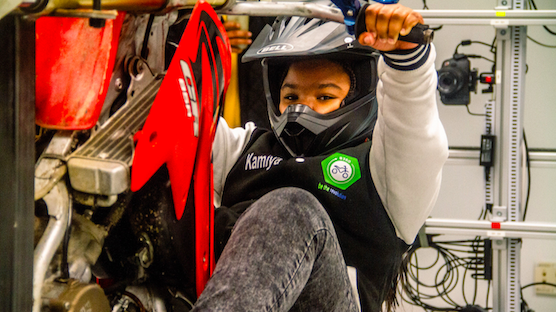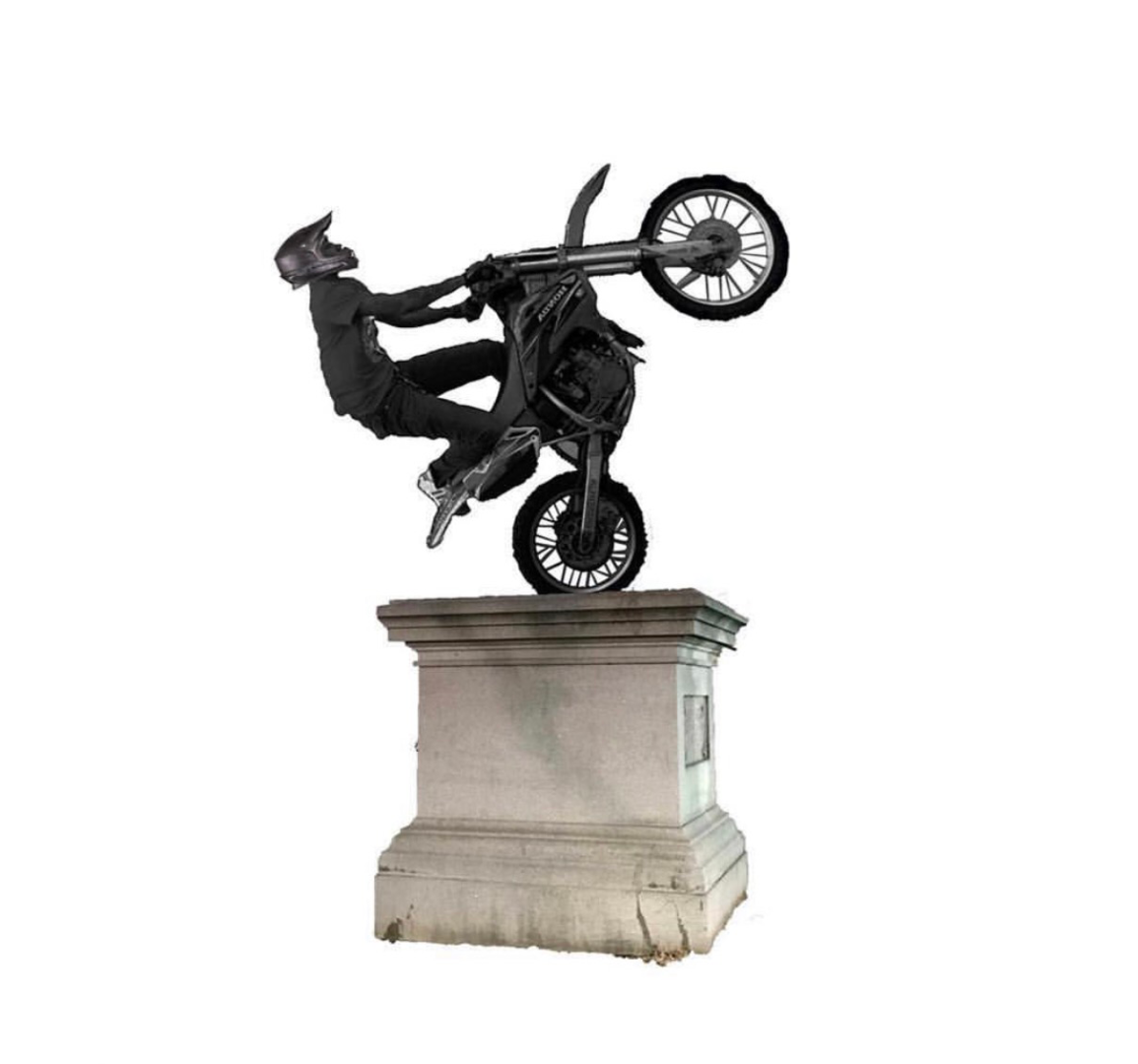The former home of a Confederate monument in Baltimore, USA could soon welcome a 3D printed statue of 12-year-old Kamiya Jordan riding a dirt bike.
Jordan is a member of a social enterprise that seeks to engage kids in learning STEM skills. Brittany Young, the founder, is a 29-year-old engineer and social entrepreneur who wants to change the future of kids who live in poverty in Baltimore by helping pave the way towards well-paying careers.
She set up a social enterprise in 2017, called B-360 to directly link what she teaches to kids’ love for urban dirt bike riding. In doing so, she hopes kids will have a greater interest in STEM skills.
Currently, a third of children in Baltimore live in poverty. Since founding the program, Young has touched the lives of more than 4,000 students via school programs, robotics camps, and pop-up lessons.
Nearly half of her students are girls, a fact important to Young because she wants to change the perception that dirt bikes and STEM subjects are only for boys and men. As a black woman, Young is showing her young female students that they can succeed in a field which is predominantly made up of white men.
This year, Young took a group of kids to the engineering technology building at the University of Maryland, Baltimore County, where they 3D printed their own mini dirt bikes and learned about virtual and augmented reality technologies.

3D Scanning and Printing Kamiya Jordan on an Upright Motorbike
Hearing of Young’s enterprise, artist April Danielle Lewis reached out to her with a larger 3D printing project. Lewis wanted to replace a Confederate monument removed in 2017 by Baltimore mayor Catherine Pugh with an “un-monument.”
Her plan was to incorporate the kids’ love for dirt biking and pay homage to “black joy and liberation.” Young recommended that one of her black students be the model for the statue and chose 12-year-old Jordan.
“Having a young black girl goes with changing perceptions,” said Young of the negative stereotypes surrounding Baltimore’s dirt bike culture.
“But it’s also about black joy and liberation. (Jordan) represents the embodiment of perseverance, but also how you can increase representation. It’s the perfect model as a whole.”
During the students’ trip to the University of Maryland’s engineering technology building, Jordan climbed onto an upright motorbike and was 3D scanned.

Lewis now has a model design which will help her create a 12-foot-statue of the student.
“It makes me feel great because I know I’m the only girl who’s the model for it…” said Jordan. “They picked me.”
Currently, the process of putting up the statue is in the early stages. City officials still haven’t made a final decision as to whether the 3D printed Jordan will temporarily replace one of the Confederate monuments.
The statue will be 3D printed using crowdsourcing. No matter where you are in the world, you can “claim” a piece of the statue to print and send it to B-360. Jordan and other students will also be leading webinars and pop-up sessions to teach contributors on how to use 3D printing.
For more on 3D printing and social impact, check out these stories:
- Layer are Building Better Wheelchairs with 3D Printing
- 24-Year-Old Engineer is 3D Printing Prosthetics for People in Poor Countries
- Brookwood School Teaches Kids how to Solve Real World Problems with the Help of 3D Printing
Source and feature image: Mashable

License: The text of "3D Printed Statue of Black Girl Could Replace Baltimore Confederate Monument" by All3DP is licensed under a Creative Commons Attribution 4.0 International License.